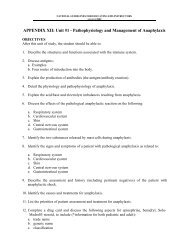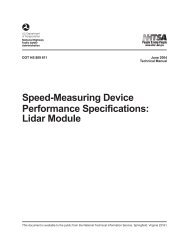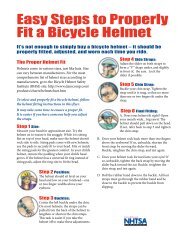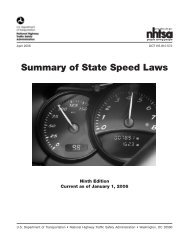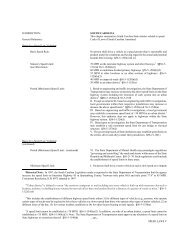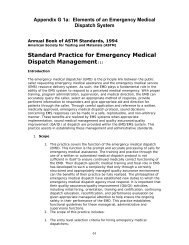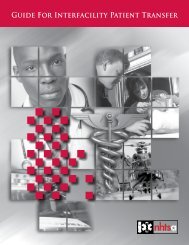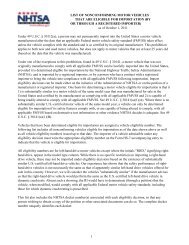The Criminal Justice System: A Guide for Law Enforcement ... - NHTSA
The Criminal Justice System: A Guide for Law Enforcement ... - NHTSA
The Criminal Justice System: A Guide for Law Enforcement ... - NHTSA
You also want an ePaper? Increase the reach of your titles
YUMPU automatically turns print PDFs into web optimized ePapers that Google loves.
One of the discovery items that the prosecution may be asked to supply is a “bill<br />
of particulars,” which is a brief statement of the core facts of the case. A copy of the bill<br />
of particulars is filed with the court and is open to public inspection. Other discovery<br />
items, such as police reports and lab reports, are generally not filed with the court and<br />
simply pass between the attorneys.<br />
Exclusionary Rule Simply stated, the exclusionary rule provides that evidence<br />
obtained through unconstitutional acts of law en<strong>for</strong>cement officers cannot be used to<br />
prove the defendant’s guilt at trial. If the court determines, usually at a pre-trial hearing,<br />
that crucial evidence was gathered by law en<strong>for</strong>cement in an unconstitutional manner, the<br />
charges may be dismissed even though the evidence is reliable and, if it could be used,<br />
would prove that the defendant is guilty.<br />
<strong>The</strong> rationale <strong>for</strong> the exclusionary rule is deterrence. <strong>The</strong> idea is that if law<br />
en<strong>for</strong>cement officers know that unconstitutional conduct will result in exclusion of<br />
evidence, they will not act unconstitutionally. Evidence that is excluded from the trial by<br />
application of the exclusionary rule is said to be suppressed.<br />
Felony A crime generally punishable by more than one year in prison. However,<br />
a sentence may include no jail or prison time, depending upon the degree (“seriousness”)<br />
of the charge and the defendant’s prior criminal history, if any.<br />
Frisk A quick search of an individual’s external clothing to determine whether<br />
the individual is armed with any sort of dangerous implement—a gun, knife, box cutter,<br />
screwdriver, etc. A frisk is also known as a “pat down.” Generally, a frisk is legal if the<br />
officer has reasonable suspicion to believe that the individual might be dangerous. <strong>The</strong><br />
officer will need to articulate the basis <strong>for</strong> this belief in order <strong>for</strong> any evidence discovered<br />
as the result of the frisk to be admitted in subsequent criminal proceedings.<br />
Frye Hearing A pretrial hearing used in some jurisdictions wherein the court<br />
determines if the “scientific evidence” is “new or novel” and if so, whether the principle<br />
or technique has been “generally accepted” in the relevant scientific community. If not<br />
new or novel, the evidence may be admitted. If new or novel and not yet accepted by the<br />
relevant scientific community, the evidence will not be admitted at trial.<br />
Grand Jury A jury that determine if there is adequate evidence to charge a defendant<br />
with a crime. Not all States use the grand jury system. Of those that do, some may require<br />
first-hand testimony from witnesses, including expert witnesses. Other States allow one<br />
person, such as an investigator employed by the prosecutor’s office, to summarize the details<br />
of the case without the need of separate testimony from individual witnesses.<br />
<strong>The</strong> following table contrasts a typical grand jury with a trial jury (again, some<br />
specifics, such as the number of jurors, will vary from State to State):<br />
32



